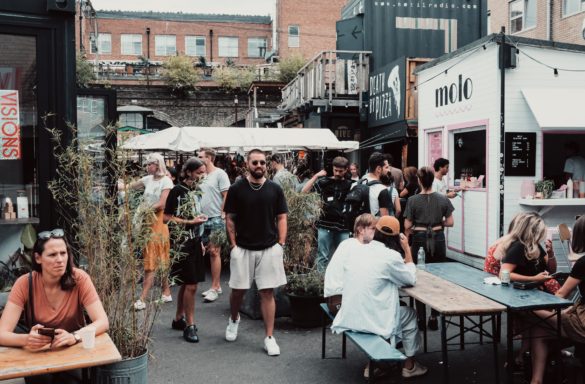ARTICLE
It’s all about people: the importance of student experience
4:38:13 24 May 2022
37°49’33”S 144°58’27”E
Universities are increasingly aware of the significance the campus experience plays for student engagement and belonging, two critical outcomes required for the creation of strong alumni networks who are more likely to provide ongoing financial support and champion their university for future student attraction. Furthermore, it is the experience of university itself that helps foster independent and confident graduates – shaping the future members of society who will go on to drive societal change and transformation.
The impacts of the Covid-19 pandemic and remote working have only amplified the importance of designing for the experience of students, staff, and industry partners. Expectedly, learner engagement scores have plummeted through lockdowns – a sense of belonging to their institution difficult to achieve without a common story and place to connect that story to.
To add to their challenges, the closing of international borders has resulted in a 33% drop in international enrolments and a consequent total sector funding loss of $1.8 billion (The Guardian, Cait Kelly). Combine this with a 10% cut in government funding over the next 2 years, and the sector is looking at a tough road ahead.
For universities, the need for a post-pandemic recovery poses a paradoxical challenge – how might we deliver a high-quality experience, whilst also being constrained by a deterioration in funding sources?
One consideration is to provide a student-focussed and activity-led masterplan. This requires a deviation away from the traditional approach to campus master planning – one that typically begins with planned infrastructure first, moving to the non-fixed components or refurbishment of the estate, and is finally then overlaid by plans for the user experience. Instead, we propose reversing the process – begin with the experience narrative and a plan for activation. Identified programmes are then used to inform refurbishment, and over time, the need for new build emerges.
One example is the masterplan for University of Western Australia. Recommending that the campus of the future is part agora and part innovation cluster, the Marketplace of Ideas experience vision spearheaded an activation plan – which included a set of guidelines, fixed and intermittent activities, and an activation team – that was specifically designed to give national and international students, its staff, and industry partners everything they needed and wanted: recognition, stimulation, and opportunity. In short, it aims to return the campus to its most important asset: its people, and in particular, its students.
Recognising that attraction to the university campus is more than an invitation to a single event, people require at least “three reasons to go”. Most obviously learning and studying, but also social, work, sport, creative arts, and activism. Therefore, we must cluster activities and design the experience through a programming lens.
To then support the functioning of these various activities, we must overlay a service lens to ensure the delivery of high-quality experiences. Whilst staff and academics are worried about the deteriorating student experience, they must acknowledge the critical role they play as hosts. 72% of staff agree their connection to students has suffered, and 63% are concerned about the campus losing vitality (Hassell, 2021, People-work on Campus, Paper-work at Home). There is an opportunity to both reconnect staff with students, and for staff to support students’ return to campus – learning from industries such as hospitality and retail, where hosts provide generous care for users and the outcome of their experience.
Additionally, the experience should be designed by students, for students themselves. A co-created experience masterplan that places the ownership back in the hands of the end users. It should be the students’ ‘little city’, where they feel both excited and responsible for its success. An example of this is University of Newcastle’s ‘you said, we did’ campaign, where the university’s ranking of graduate satisfaction lifted from the lowest to the highest quartile over the course of 3 years after a concentrated effort to listen to, act on and communicate its focus on students’ needs and preferences (Hassell, 2018, Snakes and League Table Ladders).
Once universities have addressed the revival of the on-campus student experience, financial opportunities will follow. Upon the creation of a buzzing place, retailers and commercial tenants will want to embed themselves within the campus to capitalise on foot traffic. In turn, this commercial overlay will further support ongoing precinct activation. It’s about social and financial transactions happening together – co-dependent on the success of one another.
These commercial functions will also create opportunities for community engagement, allowing the campus experience to appeal to a wider audience and mean more, for more people. Universities play an anchor role in society – a place where innovation meets industry experience and communities gather. They shape the people of tomorrow and support the people of today. One successful example of this was the ‘takeovers’ initiative implemented at the Victoria and Albert Museum in London – where local community groups were given full creative license over the museum for the evening to host an event, gaining exposure to new audiences and venture opportunities as a result.
The end goal is for the campus to become a place where students want to be – a place where students can narrate their own university story, forming memories and a sense of attachment specific to that universities’ place. This will ensure universities are able to thrive in the face of recent disruptions, remaining relevant, highly ranked and funded.
Image Credit: University of Sydney



